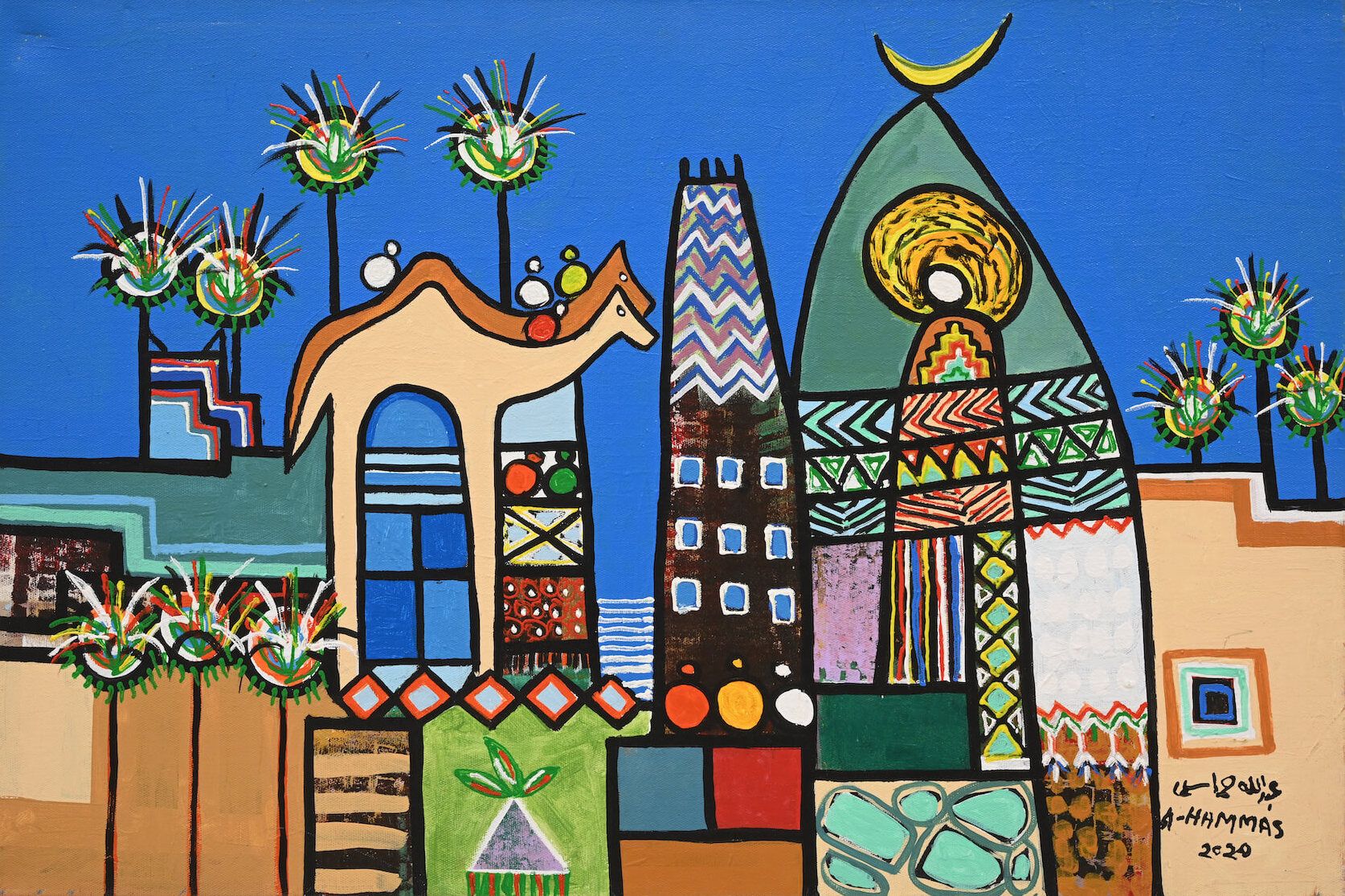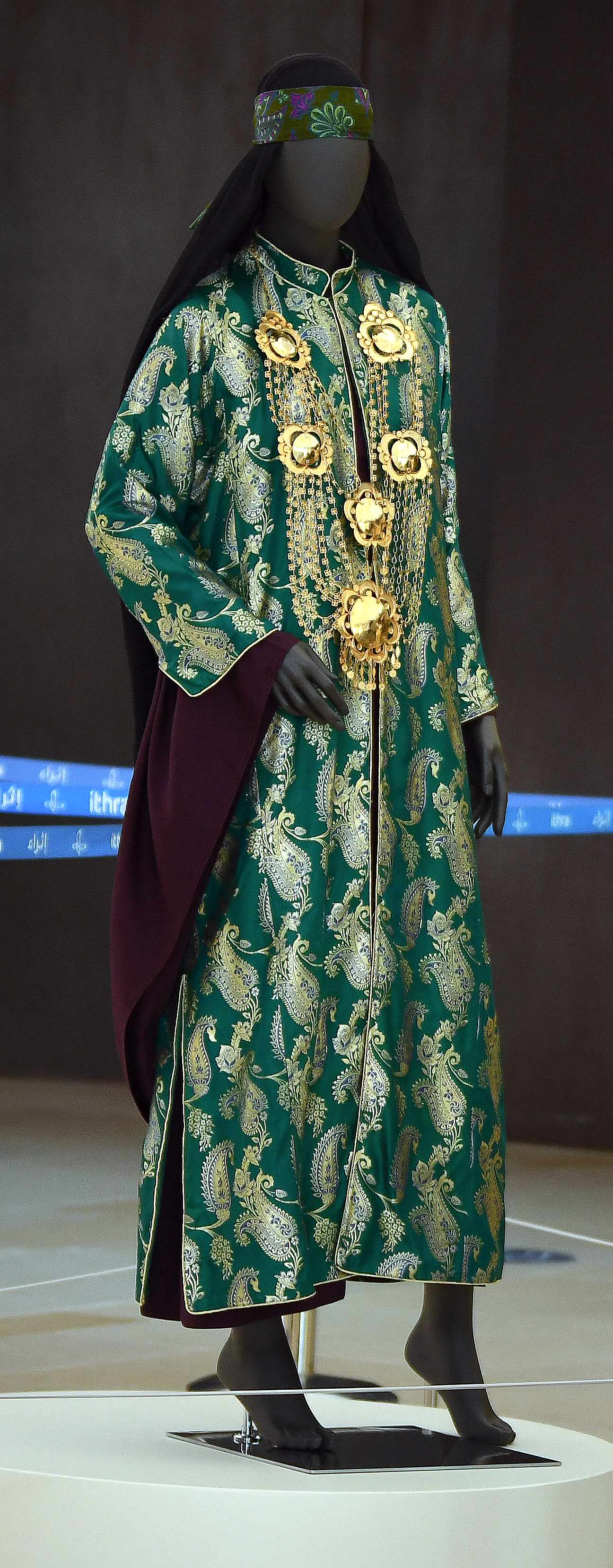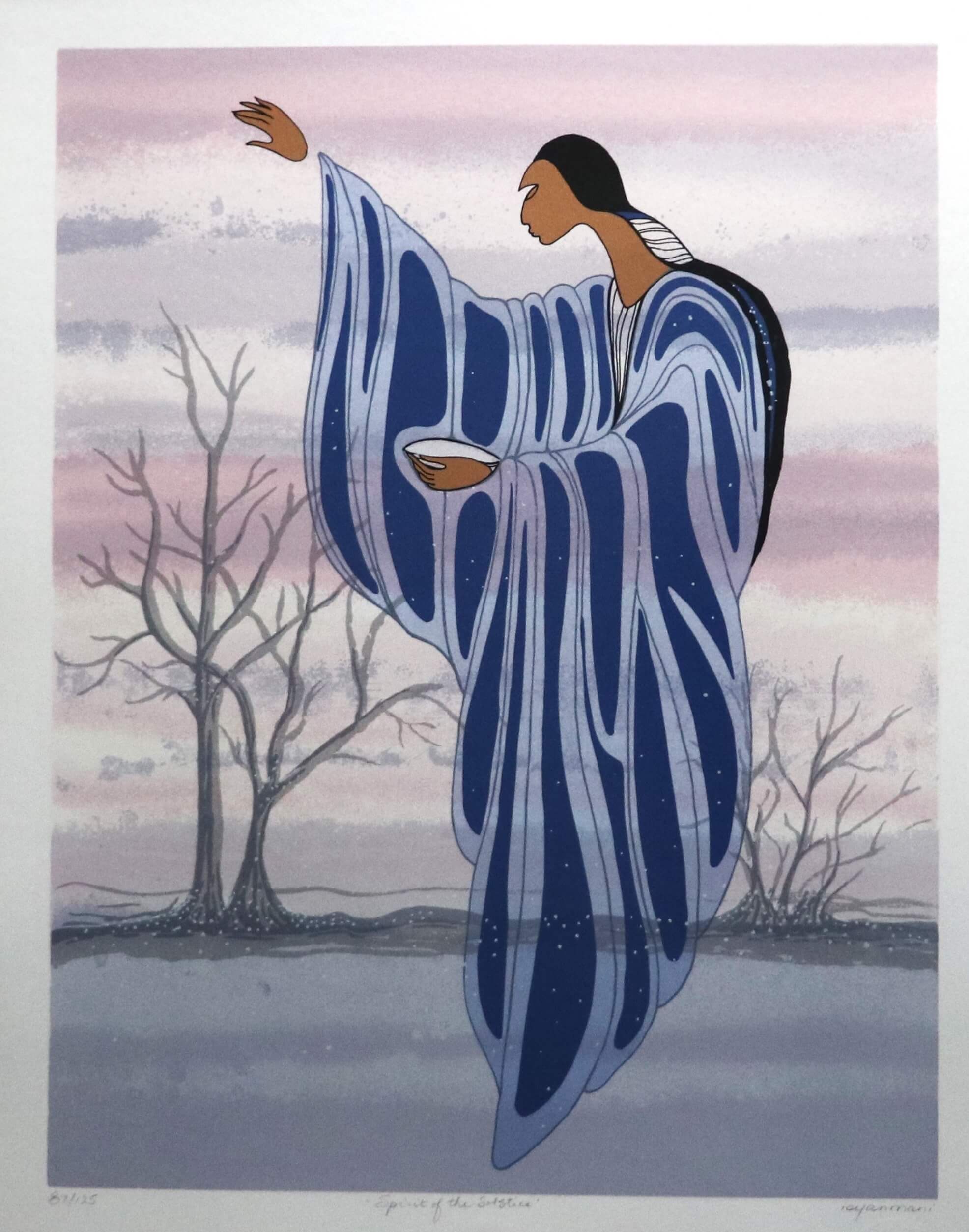Connecting Cultures with the Curves of Calligraphy
Calligraphy – the art of beautiful writing – is one of the most ancient types of art and considered the highest form of art in Islamic history. It dates back to the 7th century and is an important part of Islamic culture, history, and identity. Islamic calligraphy is known for transforming text into intricate designs and geometric compositions as a way of expressing the beauty of the Arabic language and is used to decorate mosques, walls, and buildings. Arabic Calligraphy was recently added to the UNESCO Intangible Cultural Heritage list after 16 countries presented the nomination.
The very first Dubai Calligraphy Biennale came as an initiative by the Dubai Culture and Arts Authority to celebrate this arty, reflecting the Authority’s keenness to enrich the city’s creative landscape. The biennale events and exhibitions were held across more than 30 locations around Dubai, with 19 exhibitions transforming the city into a massively unique artistic experience.
The biennale presented a mesmerizing range of Arabic scripts, spanning from the geometric elegance of Kufic and Diwani, the fluid grace of Thuluth and Naskh, the historic charm of Moroccan-Andalusian Mabsout, to the intricate grandeur of Thuluth Jali, Muhaqqiq, Rayhani, and other masterful forms that showcase unparalleled craftsmanship. The biennale was also enriched by an array of avant-garde pieces where calligraphers have infused modernity into age-old practices, offering innovative artistic interpretations that enhance the vibrancy and beauty of the Arabic alphabet.
The biennale aims to highlight the importance of calligraphy as an expressive and aesthetic tool that embodies creativity, as well as create a global platform for discovering and empowering new talent. It honors Arabic calligraphy and its global counterparts with traditional and contemporary pieces in more than eight languages, staging diverse aesthetics and a blend of typography with digital art. The event also boasts calligraphy-themed public art installations across Dubai and educational workshops by acclaimed artists. It takes the visitor into an immersive journey in the different shapes and forms of this art, starting from traditional Islamic calligraphy all the way to contemporary calligraphy from various cultures.
In this exclusive interview with Fatma Al Qurashi, Dubai Calligraphy Biennale Project Manager, we get to know more about the importance of calligraphy, how it’s related to intangible heritage, and what we can do to preserve it.

UAE-based Argentinian Yubran Gosne (aka Sanctum) with his mural titled ‘The Tide.’ Courtesy of the Dubai Culture and Arts Authority.
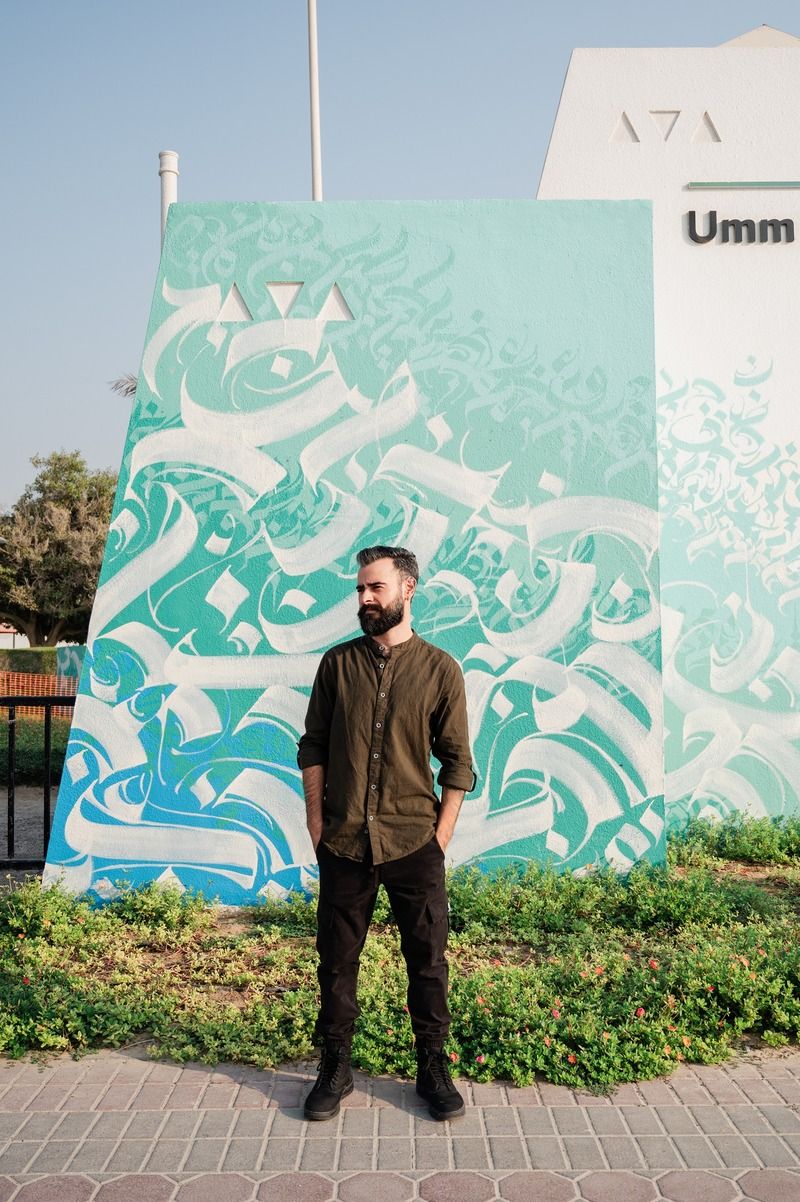
UAE-based Argentinian Yubran Gosne (aka Sanctum) with his mural titled ‘The Tide.’ Courtesy of the Dubai Culture and Arts Authority.
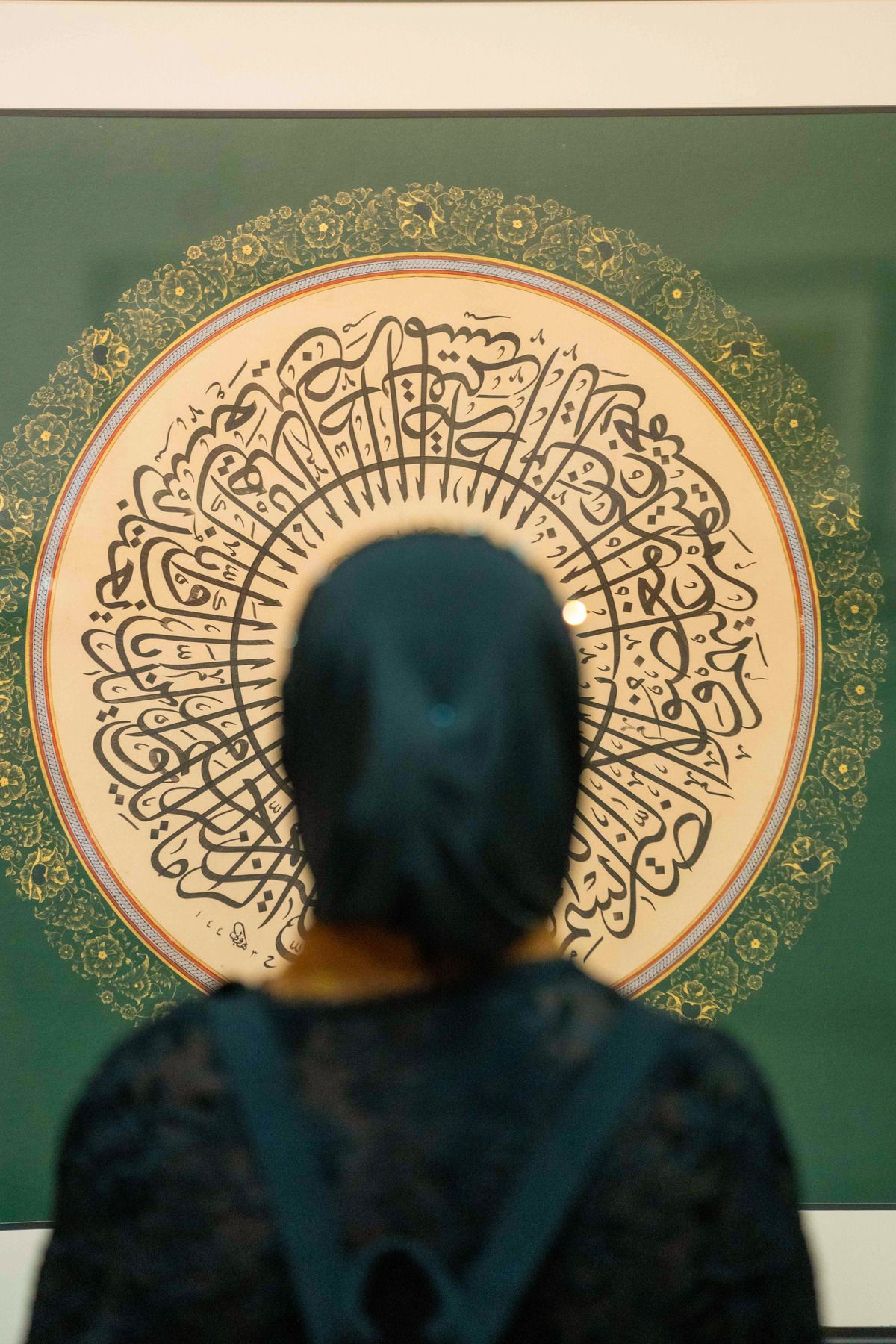
Artwork by Muhammad Melifini Hobe in the Classical Calligraphy Exhibition at the
Cultural & Scientific Association. Courtesy of the Dubai Culture and Arts Authority.
In its first edition, the Dubai Calligraphy Biennale, with the support of its partners, served as a dynamic platform that aimed to elevate the calligraphy scene in Dubai and leave a significant impact on creatives and the industry. Through introducing various languages, cultures, and mediums, in its first-time introducing design and public art as components, the biennale promoted cross-cultural exchange and had the power to revive the practice, allowing creatives to explore the world of calligraphy through different creative expressions. Visitors got the chance to deepen their appreciation of this ancient and admired art form by attending exhibitions that range from traditional Arabic calligraphy to the more contemporary and conceptual, and workshops and masterclasses facilitated by experts in the fields. Through these components, visitors gained insights into the techniques, tools, and history of calligraphy, making their visit more educational.
International calligraphers and creatives left with an appreciation of our language and Arabic calligraphy, as well as inspiration, allowing them to explore new creative interpretations. One Japanese calligrapher, who participated in the biennale, after her tour in one of the traditional Arabic calligraphy exhibitions told me: “I can’t wait to go back home and decorate my calligraphy works,” as she was fascinated by the ornamentation and gilding in the Arabic calligraphy works.
The biennale's mission of fostering cultural appreciation through art resonates with Dubai's cultural pursuits, extending its impact even further through a virtual edition for broader accessibility and enduring influence.
Dubai Culture and Arts Authority is committed to preserving the Emirati heritage. Among our priorities, cultural responsibility stands out as a key focus, where safeguarding heritage is a critical aspect of this mission. Calligraphy, as a beautifying and expressive form of art, is an integral part of our cultural backstory. It embodies the spirit and history of the UAE, reflecting our unique identity. Dubai Culture is actively involved in preserving and showing this heritage to the generations that follow, ensuring that calligraphy retains its rightful place in how we are known.
Dubai is well-known as one of the most culturally diverse places globally; a lively hub for over 200 nationalities, where various traditions, languages, and perspectives come together. This unique blend provides residents and visitors with the chance to explore a broad range of heritage, historical sites, cultural events, and traditional activities, showcasing the depth and richness of the emirate’s cultural offerings. Through museums and heritage sites, we create cultural centers that offer enriching experiences for all. Our goal is to make exploring history valuable and emphasize its importance in guiding us toward the future. In Dubai, we strongly believe that culture should be accessible to everyone, with numerous events, museums, and heritage sites promoting a sense of tradition, and pride, and acting as a bridge of communication among communities worldwide.
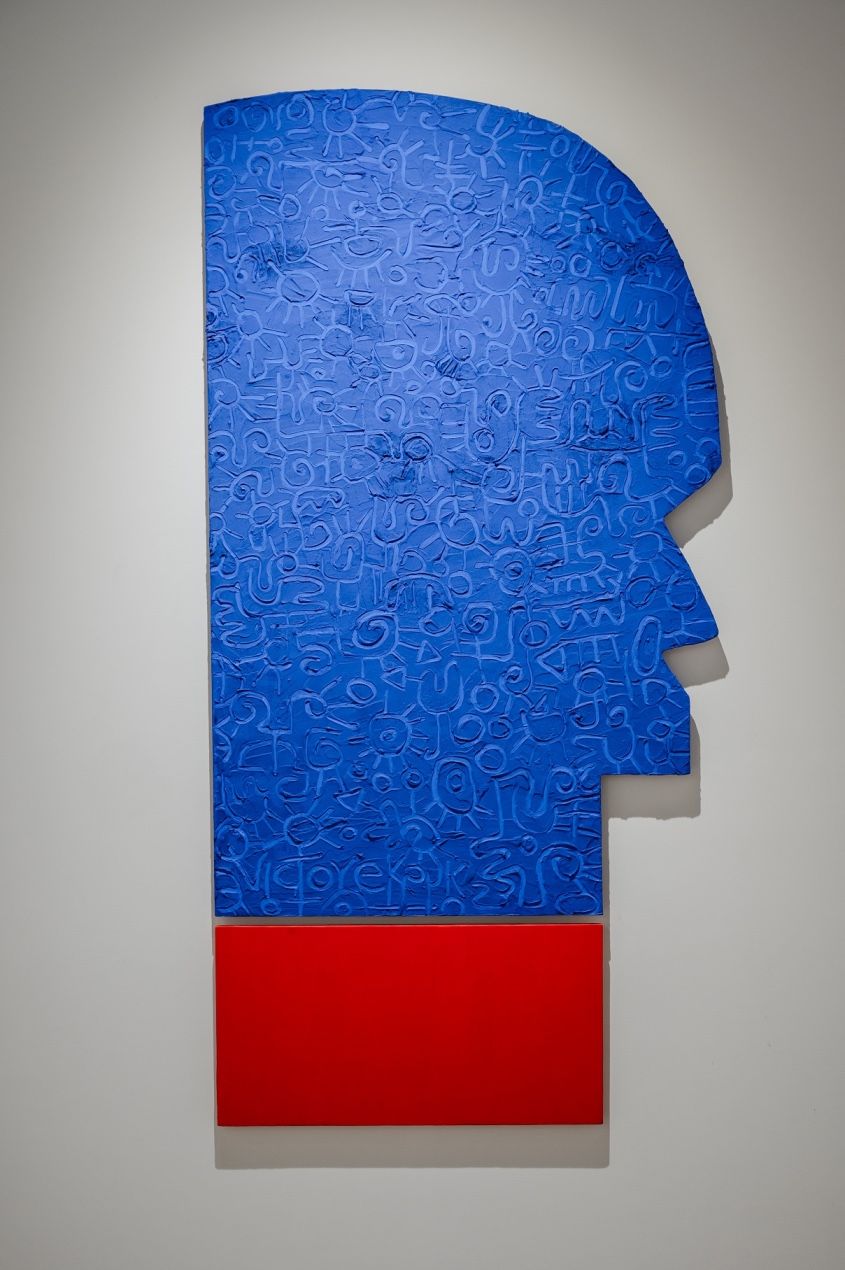
Artwork by Viktor Ekpuk at the INTERwoven TEXTures exhibition in Efie Gallery

Viktor Ekpuk alongside his artworks at the INTERwoven TEXTures exhibition in Efie Gallery. Courtesy of the Dubai Culture and Arts Authority.
Calligraphy as an art form is a living testament to our cultural identity. In the UAE, it has a rich and storied history deeply rooted in our heritage. The 'History of Arabic Calligraphy in the United Arab Emirates' exhibition held at Al Shindagha Museum in partnership with Huroof Arabiya magazine, showed the profound passion of Emirati talent for calligraphy. It underscored our deep commitment and enduring interest in this artistry.
This exhibition was a journey into the origins of calligraphy, tracing its roots in the country. It provided insights into the efforts of Emirati calligraphers, highlighting what can be done with the Arabic letter. Through this exhibition, 12 Emirati calligraphers and artists shared their contributions to advancing this art form. Their art showed how special calligraphy is to the UAE. The exhibition displayed how calligraphy is vital to our history and can change to fit modern times, reminding us of who we are and where we come from.
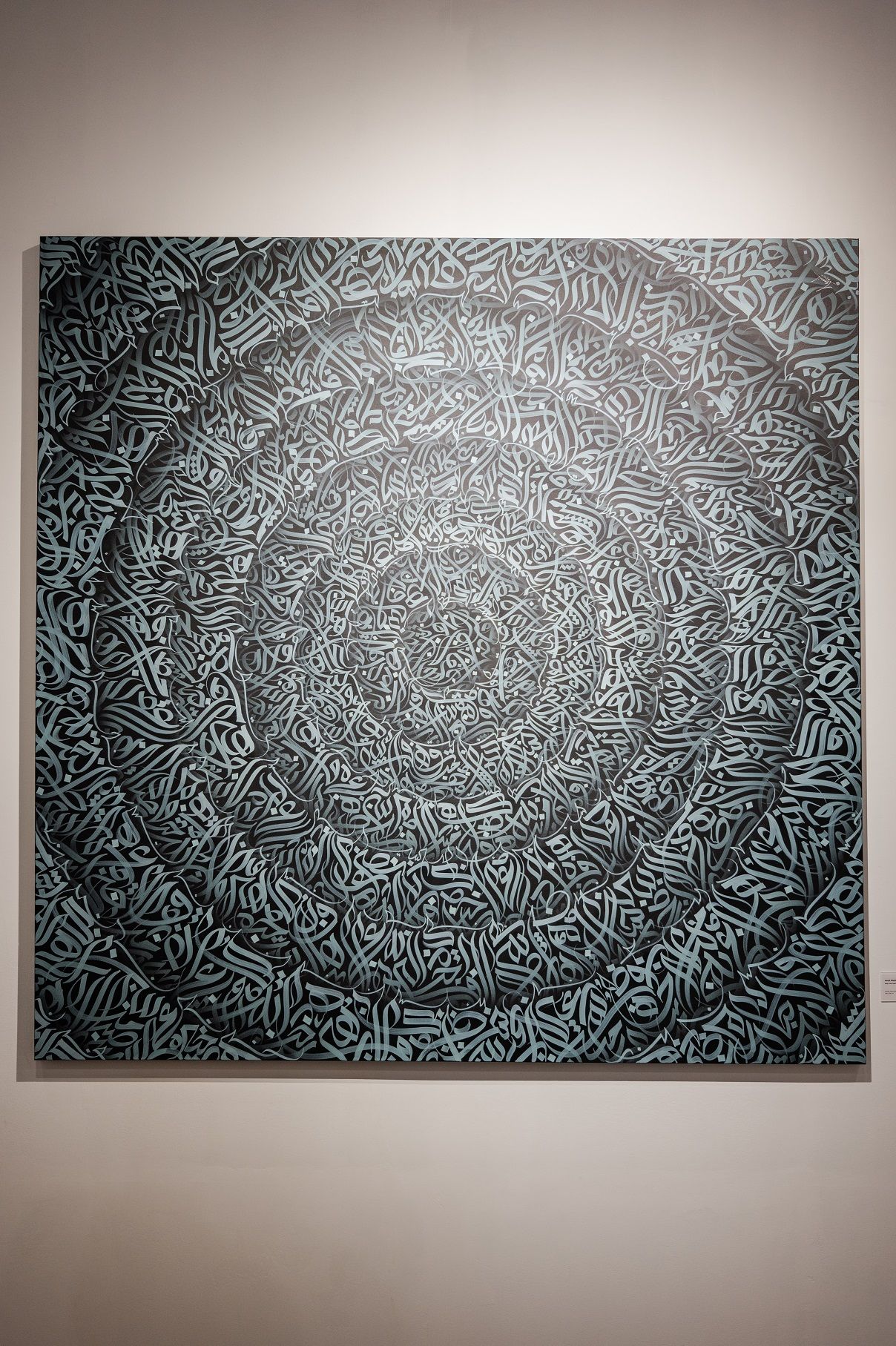
The artwork ‘Deep Ocean Layers’ by Ismail Abdul Rahman in the ‘Calligraphy Redefined: A Perspective in Play’ exhibition at AWC Gallery. Courtesy of the Dubai Culture and Arts Authority.
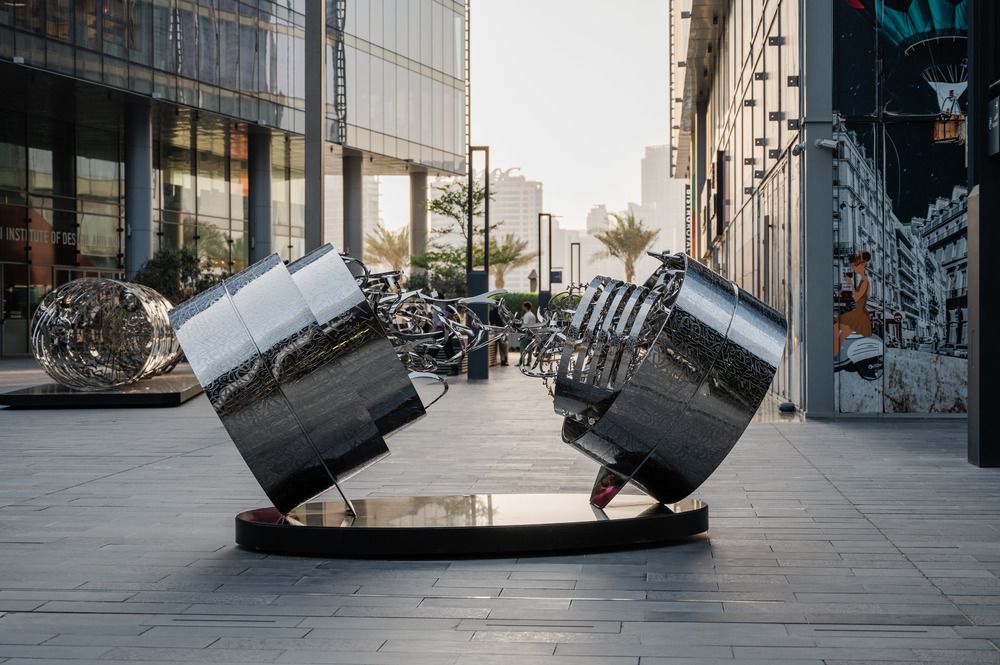
Emission of Language installation by Mattar bin Lahej placed in Dubai Design District. Courtesy of the Dubai Culture and Arts Authority.
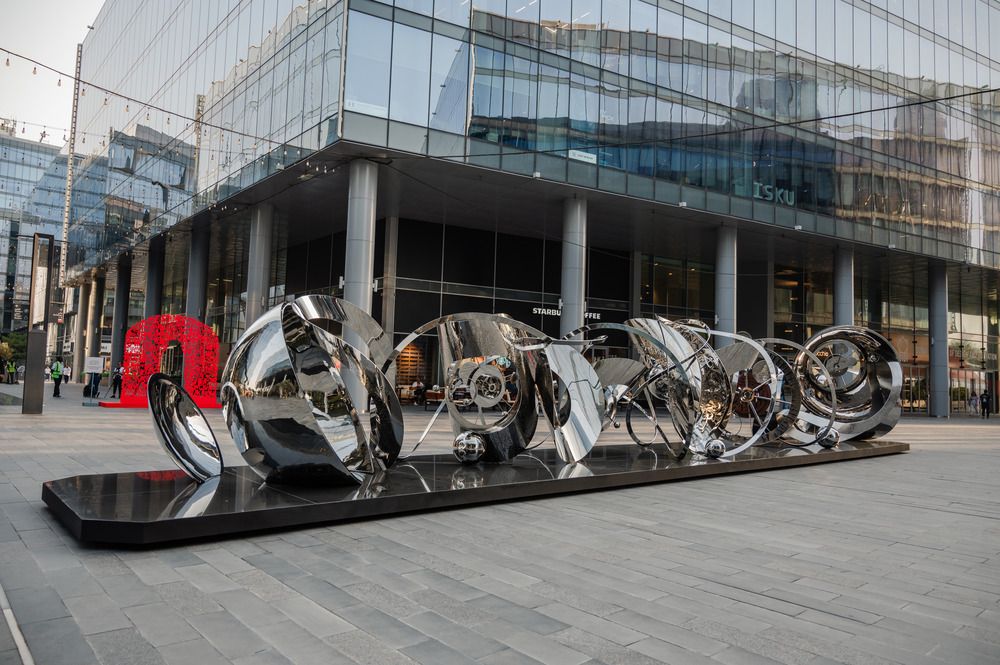
The Quranic Encyclopaedia installation by Mattar bin Lahej placed in Dubai Design District. Courtesy of the Dubai Culture and Arts Authority.
At the heart of the Dubai Calligraphy Biennale, supported by Al Rostamani Group (Lead Supporter) and Sandooq Al Watan (Supporter) and held in partnership with 35 different entities, lies its profound impact in creating a shared and transformative space for the expression and appreciation of calligraphy. The biennale united people from different backgrounds, cultures, and languages all in one city to celebrate calligraphy across various mediums and styles. The ‘Connecting Cultures’ exhibition in d3 showcased more than eight languages, featuring artists from all over the world, and serving as a dynamic platform for both the aesthetic exploration of calligraphy and as a hub for artistic and cultural dialogue.
Community building emerges as a natural consequence of this collective experience. Beyond being mere admirers, attendees became part of a global community bound by a shared love for calligraphy.
